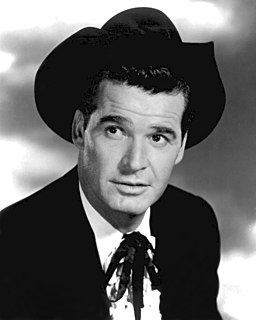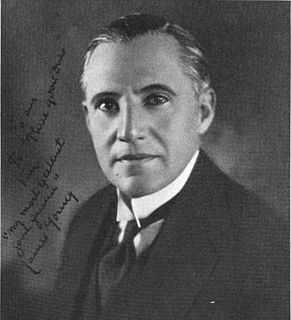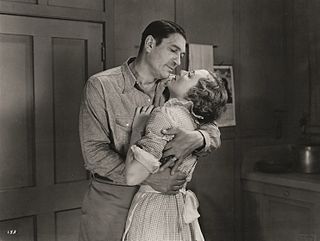The spy film genre, also known sometimes as an espionage film, deals with the subject of fictional espionage, either in a realistic way or as a basis for fantasy. Many novels in the spy fiction genre have been adapted as films, including works by John Buchan, le Carré, Ian Fleming (Bond) and Len Deighton. It is a significant aspect of British cinema, with leading British directors such as Alfred Hitchcock and Carol Reed making notable contributions and many films set in the British Secret Service.

A Free Soul is a 1931 American pre-Code drama film that tells the story of an alcoholic San Francisco defense attorney who must defend his daughter's ex-boyfriend on a charge of murdering the mobster she had started a relationship with, who he had previously gotten an acquittal for on a murder charge. A Free Soul stars Norma Shearer, Leslie Howard, Lionel Barrymore, and Clark Gable.
The Society of Motion Picture and Television Engineers (SMPTE), founded in 1916 as the Society of Motion Picture Engineers or SMPE, is a global professional association, of engineers, technologists, and executives working in the media and entertainment industry. An internationally recognized standards organization, SMPTE has more than 800 Standards, Recommended Practices, and Engineering Guidelines for broadcast, filmmaking, digital cinema, audio recording, information technology (IT), and medical imaging. In addition to development and publication of technical standards documents, SMPTE publishes the SMPTE Motion Imaging Journal, provides networking opportunities for its members, produces academic conferences and exhibitions, and performs other industry-related functions.

James Garner was an American actor, producer, and voice artist. He starred in several television series over more than five decades, including popular roles such as Bret Maverick in the 1950s Western series Maverick and as Jim Rockford in the 1970s private detective show, The Rockford Files. He played leading roles in more than 50 theatrical films, including The Great Escape (1963) with Steve McQueen, Paddy Chayefsky's The Americanization of Emily (1964) with Julie Andrews, Grand Prix (1966) with Toshiro Mifune, Blake Edwards's Victor/Victoria (1982) with Julie Andrews, and Murphy's Romance (1985) with Sally Field, for which he received an Academy Award nomination. Garner's career and popularity continued through another decade in movies like Space Cowboys (2000) with Clint Eastwood, and The Notebook (2004) with Gena Rowlands.
The following is an overview of 1928 in film, including significant events, a list of films released and notable births and deaths. Although some movies released in 1928 had sound, most were still silent.

Pierce Brothers Westwood Village Memorial Park & Mortuary is a cemetery and mortuary located in the Westwood Village area of Los Angeles. It is located at 1218 Glendon Avenue in Westwood, with an entrance from Glendon Avenue.

London After Midnight is a lost 1927 American silent mystery film with horror overtones directed and co-produced by Tod Browning and starring Lon Chaney, with Marceline Day, Conrad Nagel, Henry B. Walthall, and Polly Moran. The film was distributed by Metro-Goldwyn-Mayer, and was based on the scenario "The Hypnotist", also written by Browning.

Donald Crisp was an English film actor as well as was an early producer, director and screenwriter. His career lasted from the early silent film era into the 1960s. He won an Academy Award for Best Supporting Actor in 1942 for his performance in How Green Was My Valley.

The Crowd is a 1928 American silent film directed by King Vidor and starring James Murray, Eleanor Boardman and Bert Roach. The film is an influential and acclaimed feature which was nominated at the very first Academy Award presentation in 1929, for several awards, including Unique and Artistic Production for MGM and Best Director for Vidor.
Van Beuren Studios was a New York City-based animation studio that produced theatrical cartoons as well as live action short-subjects from the 1920s to 1936.

James Francis Ivory is an American film director, producer, and screenwriter. For many years he worked extensively with Indian-born film producer Ismail Merchant, his domestic as well as professional partner, and with screenwriter Ruth Prawer Jhabvala. All three were principals in Merchant Ivory Productions, whose films have won six Academy Awards; Ivory himself has been nominated for four Oscars, winning one.

Lila Lee was a prominent screen actress, primarily a leading lady, of the silent film and early sound film eras.

Paul Dooley is an American actor, writer and comedian.

Phyllis Maude Haver was an American actress of the silent film era.

Should Married Men Go Home? is a silent short subject co-directed by Leo McCarey and James Parrott starring comedy duo Laurel and Hardy. It was released by Metro-Goldwyn-Mayer on September 8, 1928.

James Young was an American film director, actor, and screenwriter of the silent era. Before films Young had a successful career as a stage actor appearing on Broadway and throughout the country, and was the author of a notable 1905 book on theatrical makeup. Young directed 93 films between 1912 and 1928. He also appeared as an actor in 62 films between 1909 and 1917.

Home, James is a 1928 American silent comedy film directed by William Beaudine. This is a preserved film at the UCLA Film and Television Archive and Cinematheque Royale de Belgique, Brussels.

Ernest Miller was an American cinematographer who was nominated for an Academy Award at the 1939 Oscars for Best Cinematography for the film Army Girl, sharing the nomination with Harry J. Wild. He had nearly 350 film and television credits to his name, mostly Westerns, including some of the early episodes of Gunsmoke. Location work on Army Girl was done primarily at the Iverson Movie Ranch in Chatsworth, Calif., where Miller cut his teeth in B-Westerns and became one of the most prolific -- and one of the best -- of the site's shooters during the course of his career. His camera work at Iverson became identifiable for Miller's trademark use of the site's charismatic sandstone rock features as framing devices, as he incorporated the giant boulders into the artistry of the outdoor action shots in ways that few cinematographers could match.

A Race for Life is a 1928 American silent drama film directed by D. Ross Lederman. Originally, the film was presumed to be lost. However, according to the Library of Congress Database, the film was found in the Netherlands. The film was released with a Vitaphone soundtrack with a synchronised musical score and sound effects.














